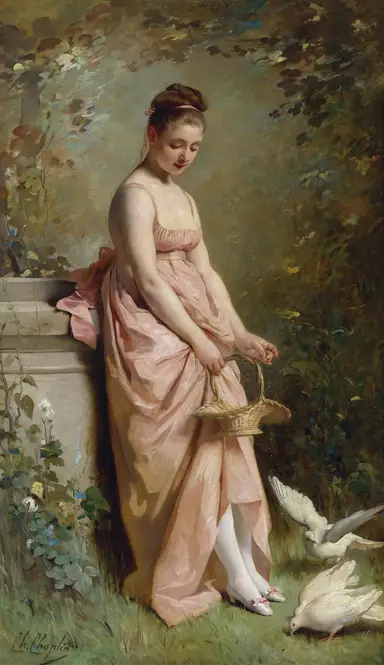-

Young Woman with Flower Basket
A young woman cradles a woven basket brimming with blooms, her gaze soft yet distant. The flowers spill over the edge, petals catching light against the dark folds of her dress. There’s something unspoken in the way her fingers curl around the handle—not quite holding on, not quite letting go.
-

The Pearl-necklace
A woman gazes past the frame, her fingers lightly touching the pearls at her throat. The necklace glows against her skin—cool, smooth, weighted with unspoken meaning. Something lingers in her expression, just out of reach.
-

Das Stubenmädchen
A young maid pauses mid-task, her apron slightly rumpled. The quiet tension in her stance suggests a moment stolen between duties, a fleeting second of stillness in the daily grind. The dim light catches the folds of her uniform, hinting at untold stories behind the domestic scene.
-
-full.webp)
Portrait de Madame Charles Chaplin (1863)
A young woman gazes past the viewer, her delicate features framed by soft curls. The lace at her collar catches the light, contrasting with the rich darkness of her dress. There’s a quiet intensity in her expression—neither melancholy nor joy, but something poised between the two.
-

Mädchen mit weißem Tuch und Katze
A girl clutches a white cloth, her gaze distant. A cat curls beside her, its tail flicking. The scene holds an unspoken tension—something fragile, about to unravel.
-

Feeding Doves
A tender scene of doves flocking around a figure, bathed in soft light, capturing the quiet beauty of fleeting connection.
-
-full.webp)
Portrait de femme (1876)
A woman’s introspective gaze and delicate features are rendered with soft, luminous brushwork, evoking both stillness and quiet depth.